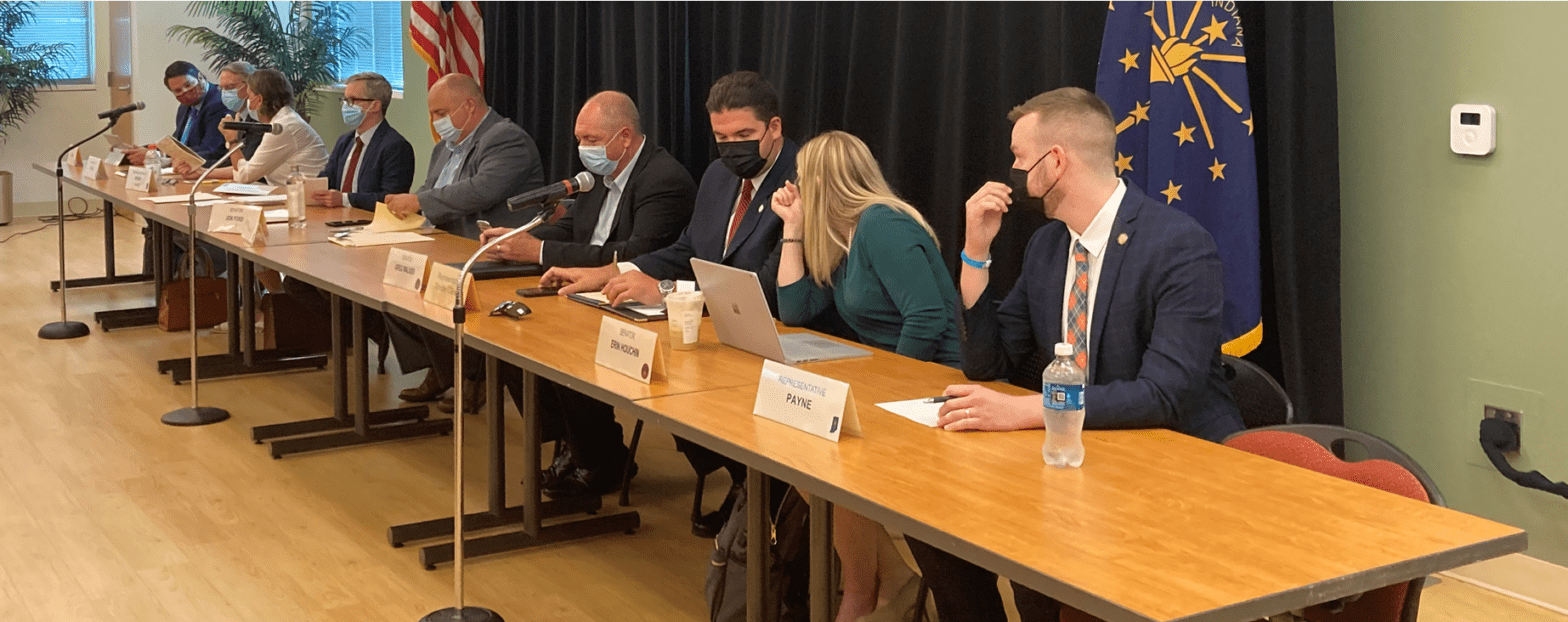
Sellersburg, Ind. — Southern Indiana residents told legislators Saturday that they’ve lived with gerrymandered election districts for the past 10 years and they’ve had enough. In a hearing at Ivy Tech Sellersburg, they called for districts that are compact, competitive and share people with common interests.
“We want to be treated fairly, democratically,” said Barbara Anderson, a Jeffersonville resident. “We do not want you to choose for us what we should do, but let us tell you what we want.”
Republican lawmakers, who control the redrawing of districts to reflect the 2020 census, led eight hearings Friday and Saturday. About 75 people attended in Sellersburg and 17 spoke.
Several echoed Rep. Matt Pierce, D-Bloomington, who called the hearings a “public relations track designed to give the illusion of transparency” while the real work will take place behind closed doors. Some urged legislators to have an independent commission draw the maps.
A consistent message was that people want competitive elections and they want to be grouped in districts with their neighbors. Speakers urged legislators not to split towns, cities and counties any more than necessary to achieve districts with equal populations.
“It just makes sense to have compact districts where people get to know each other,” said Steven Fleece, a former Clark County judge.
Fleece, a Democrat, said he was “mad as hell” at Sen. Ron Grooms, R-Jeffersonville, when Grooms voted for a Republican-backed anti-union law. “But that never stopped me from respecting Ron, from liking Ron, from realizing he is a conscientious person who cares about his constituents,” he said. “That’s what happens when you have districts where people know each other and interact with each other.”
But that too rarely happens, speakers said. They pointed out that Clark County is split between four state House districts and two Senate districts. And congressional districts, as drawn in 2011, don’t group together the communities near the Ohio River. Instead, the 6th District reaches from Madison all the way north to Muncie. The 8th reaches from Evansville to north of Terre Haute. The 9th goes from Jeffersonville and New Albany to the south Indianapolis suburbs.
Rural Scott County is split between the 6th and 9th districts. That makes it hard for the county, which ranks at the bottom for health indicators, to get the help it needs, said Austin resident Byron Holland.
“Some people in Scott County, they put it this way: We live in a butt crack between two districts,” Holland said, drawing laughs from the crowd.
Several speakers lamented the lack of competitive districts. Election results are often a foregone conclusion, they said, leading to Indiana’s low election turnout rates.
Chris Coyle, a college political science instructor and Clark County Democratic official, said the action in noncompetitive districts shifts to the primaries, which become “purity contests” with candidates taking extreme positions to motivate the party’s base.
“Certainly, gerrymandering disadvantages the minority party, but I would submit that gerrymandering is also not healthy for the majority party in the long run,” Coyle said.
Sen. Jon Ford, R-Terre Haute, who led the hearing as chairman of the Senate Elections Committee, said legislators will take the comments to heart but will be constrained by the realities of census data and a legal requirement that districts must be nearly equal in population.
“The line has to be drawn somewhere,” he said after the hearing. — Steve Hinnefeld